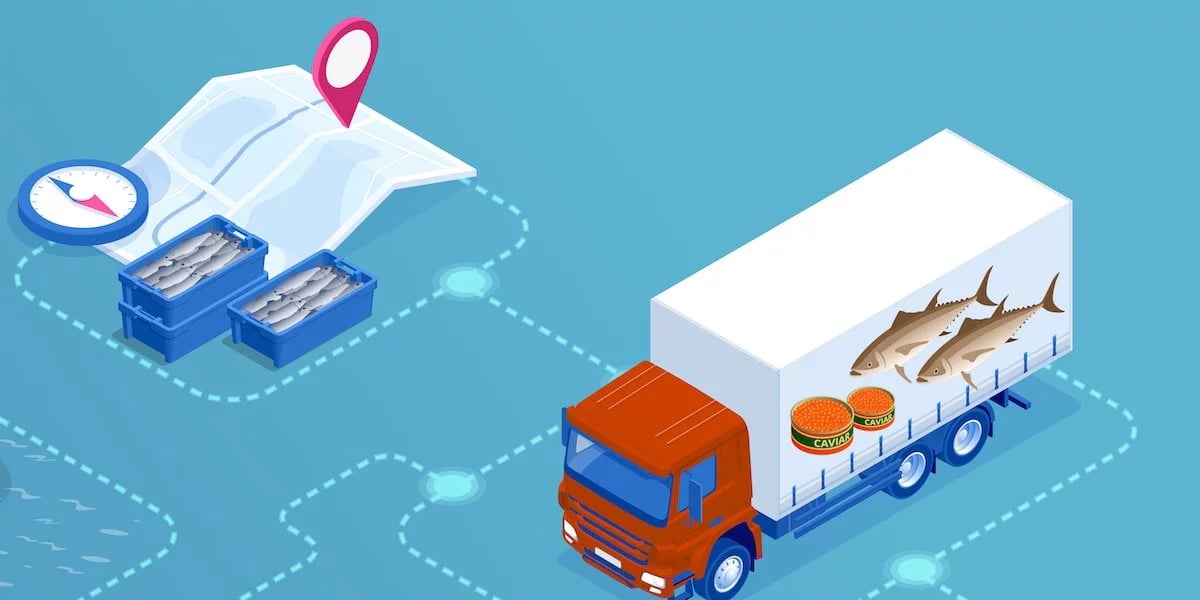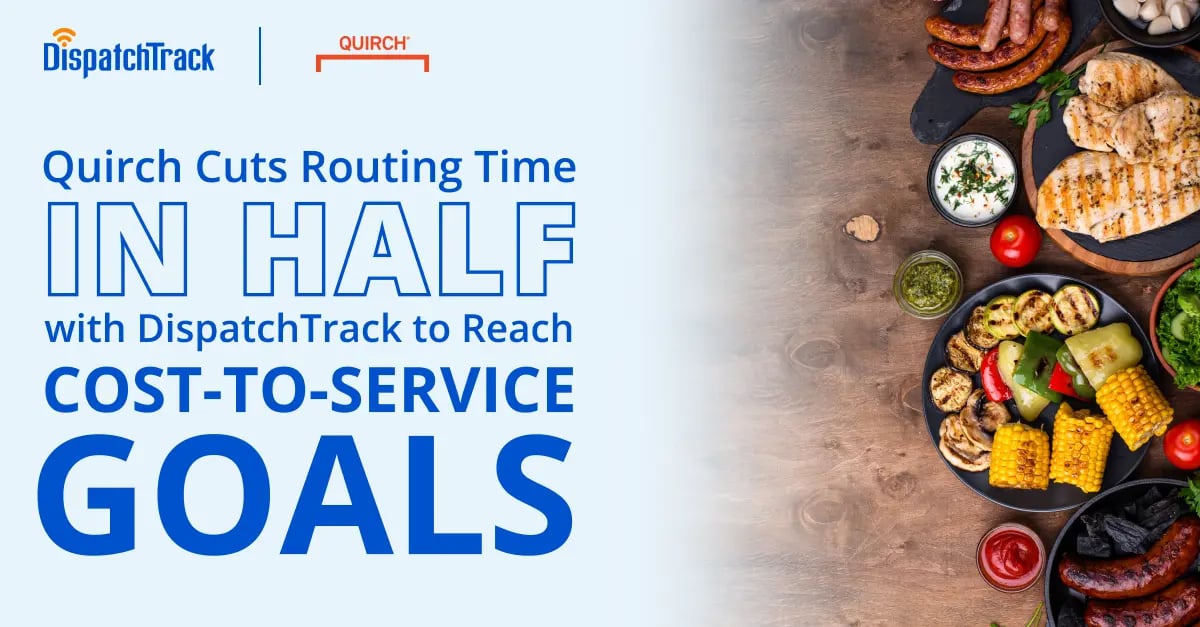For enterprises that deal with large delivery network, getting your technology stack right is a delicate balancing act—you need to build in capabilities that enable your teams to do their jobs effectively across a host of different functions, but you also need enough clarity, usability, and visibility that processes and information don’t become completely chaotic.
 This is especially true for businesses like food and beverage distributors who deal with a huge amount of complexity on a daily basis. Where some industries can get by on rolling out new, dynamically-generated routes every day to meet customer demand, food and beverage distributors usually need to keep the same customers on the same routes at the same times each week, which increases the level of routing complexity exponentially. This increase in complexity has a cascade effect across the entire delivery process: routes are harder to create, which makes last minute adjustments harder to perform, which makes accurate ETAs and reliable delivery costing more challenging.
This is especially true for businesses like food and beverage distributors who deal with a huge amount of complexity on a daily basis. Where some industries can get by on rolling out new, dynamically-generated routes every day to meet customer demand, food and beverage distributors usually need to keep the same customers on the same routes at the same times each week, which increases the level of routing complexity exponentially. This increase in complexity has a cascade effect across the entire delivery process: routes are harder to create, which makes last minute adjustments harder to perform, which makes accurate ETAs and reliable delivery costing more challenging.
And it’s not uncommon to see these challenges impact systems beyond delivery management—and vice versa. As a result, one of the biggest topics in delivery management for food and beverage distribution right now is IT consolidation. But what does IT consolidation look like in practice, and how should distributors and wholesalers think about it?
Why Is IT Consolidation Valuable?
It might seem like more data is better when it comes to complicated processes—but that’s not the full story. Imagine you’re trying to execute on a delivery plan on a given day, when all of a sudden you get a phone call from one of your mid-tier customers asking what happened to your delivery driver. If you have to hunt through multiple different screens on multiple different applications to figure out why the driver didn’t show up at the right time, the customer on the phone isn’t going to feel a lot of confidence in your ability to get things back on track.
Conversely, when you have the ability to visualize that delivery run and see all the relevant data pertaining to it within a single app, you can answer your customer’s question quickly—maybe there was an unexpected street closure that made the route impossible—and work with them to find a resolution. They may not be thrilled, but they’ll get their delivery as quickly as you can manage and, hopefully, appreciate how quickly you were able to resolve the situation.
.png?width=1501&height=501&name=image%20(6).png)
This is just one example of how IT consolidation can provide real value for food and beverage distributors. Many of the other examples revolve less around handling customer calls and more around internal strategic planning processes—e.g. the ability to plan routes, estimate related costs, and execute those plans without hopping between innumerable different platforms. But in any given example, you’re going to see the same themes cropping up over and over again:
- IT consolidation makes it easier to cut through the complexity that comes with food and beverage distribution.
- It boosts visibility across functions and makes coordination among delivery, sales, merchandising, warehousing, etc. much easier.
- It saves time by streamlining what the typical user actually needs to do in order to create, implement, and execute workable distribution plans.
- Lastly, it reduces costs by eliminating the need for redundant applications.
How to Approach Technology Decisions
Okay, we’ve established that consolidating IT can benefit food and beverage distributors, but how do you actually approach IT consolidation from a practical perspective? Here are a few questions to ask yourself as you think about yourfood and beverage technology stack and consider making changes or adopting new platforms and tools.
- What does your ideal distribution process look like? In other words, what capabilities would you like both back-office staff and delivery personnel to have in order to plan and execute deliveries?
- Who needs access to what data, when? Thinking across functions, determine which processes would benefit from the ability to gain quick insights into one another.
- How should your technology stack be architected? How do you envision disparate applications and systems communicating, and how do you ensure that each new piece of technology fits in?
- Where are there potential areas for cost reduction? If there are systems that have redundant functionality, or multiple systems that can be replaced by a single solution, that can be a way to decrease recurring IT costs.
Here, it’s best not to be hemmed in by thinking about what your technology is currently capable of. Route planning, for instance, is a huge stumbling block for many distributors, requiring weeks of work and outside specialists to come in. Dream big and imagine a world where routes can be planned in seconds—then work from there in sketching out your ideal technology setup.

Best Practices for IT Consolidation in Food and Beverage Distribution.
Of course, every food and beverage distribution outfit is different—and your technology stack is going to be unique to the particulars of your business. At the same time, there are a handful of best practices that will typically apply for consolidating your IT:
- Concentrate on the cloud: cloud-native applications save you the IT costs that come from running your applications in house—but they also set you up for easier integration and data sharing between systems.
- Look for fast, powerful, scalable applications: We mentioned route optimization briefly above—but here it’s a valuable case in point. When you have the capabilities to create routes and perform reroutes at lightning speed, streamlining your processes (and therefore your technology) is only a step away. Often, this comes down to finding apps that have serious processing power and are architected to handle high volumes as needed.
- Focus on user-friendliness: High-quality UX doesn’t have to come at the expense of functionality. On the contrary, solutions that make it easy for users to do what they need to do to excel at their jobs actually improve your organization’s capabilities.
- Seek out innovation: This doesn’t mean following the latest trends. Rather, it means going out of your way to work with companies that regularly roll out updates and improvements to their food distribution software—this helps you ensure that your IT will be able to evolve alongside your business and the market as a whole. This goes a long way towards future-proofing your technology stack.
What might delivery technology selected with these questions in mind look like in practice? For routing and delivery management technology, it might mean adopting an application designed to easily import orders from your PoS or ERP systems, leverage AI and scalable cloud-based architecture to generate efficient routes in minutes, and automatically dispatch those routes to drivers via a highly-connected mobile app.
As deliveries got underway, it would offer a single-pane-of-glass view where planners, dispatchers, and customer service reps could easily track deliveries and spot exceptions. After the fact, it would be easy to see which stops were profitable and leverage that information throughout other processes. More broadly, planning and delivery data would be instantly available across functions so that processes like sales, merchandising, etc. could coordinate their efforts. When market conditions changed—maybe because a top client wants to increase their delivery frequency—you could adjust plans quickly and easily and give visibility into those updates to both internal staff and customers.
IT consolidation is more than just a buzzword—and it’s more than just a cost-cutting tactic. Approached with the right mindset, it can pave the way for smarter processes across the board and even position you to provide better service to your customers.